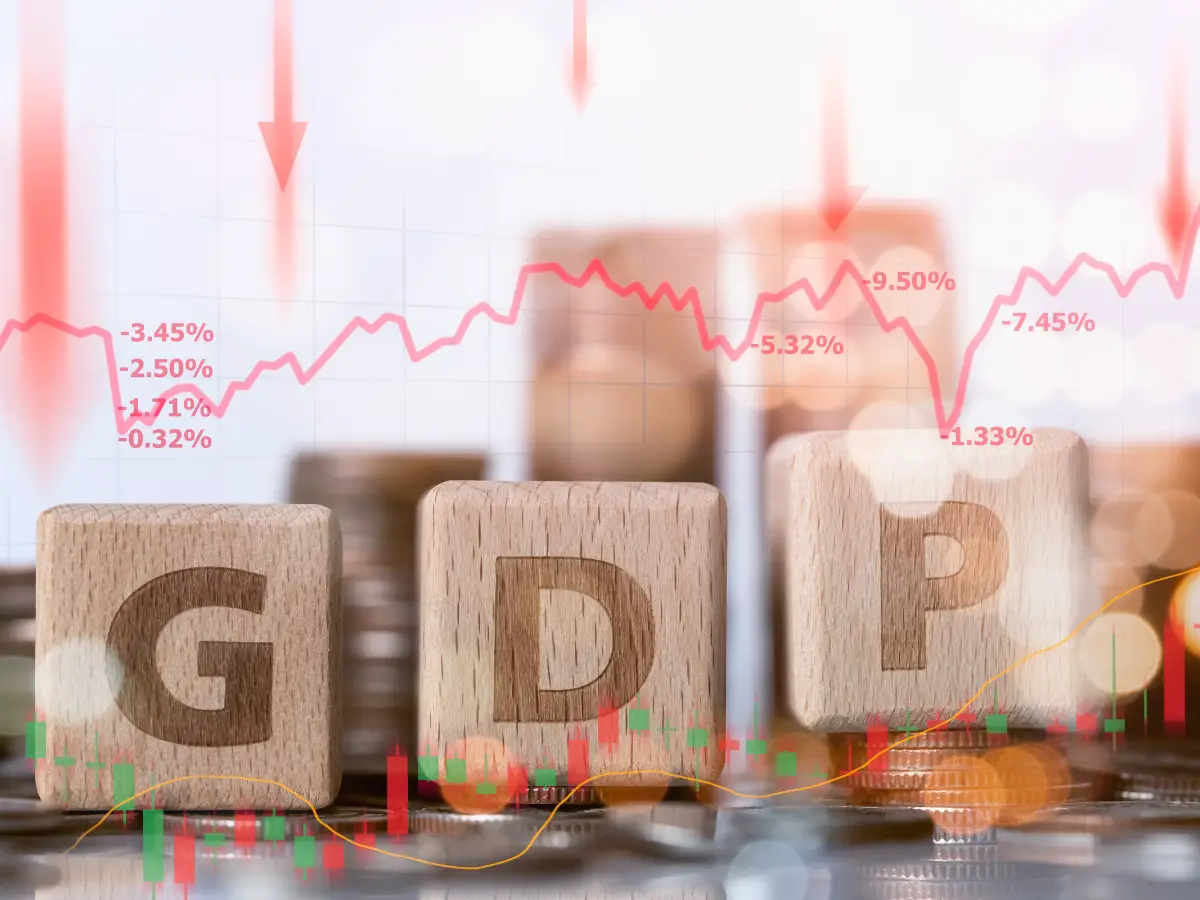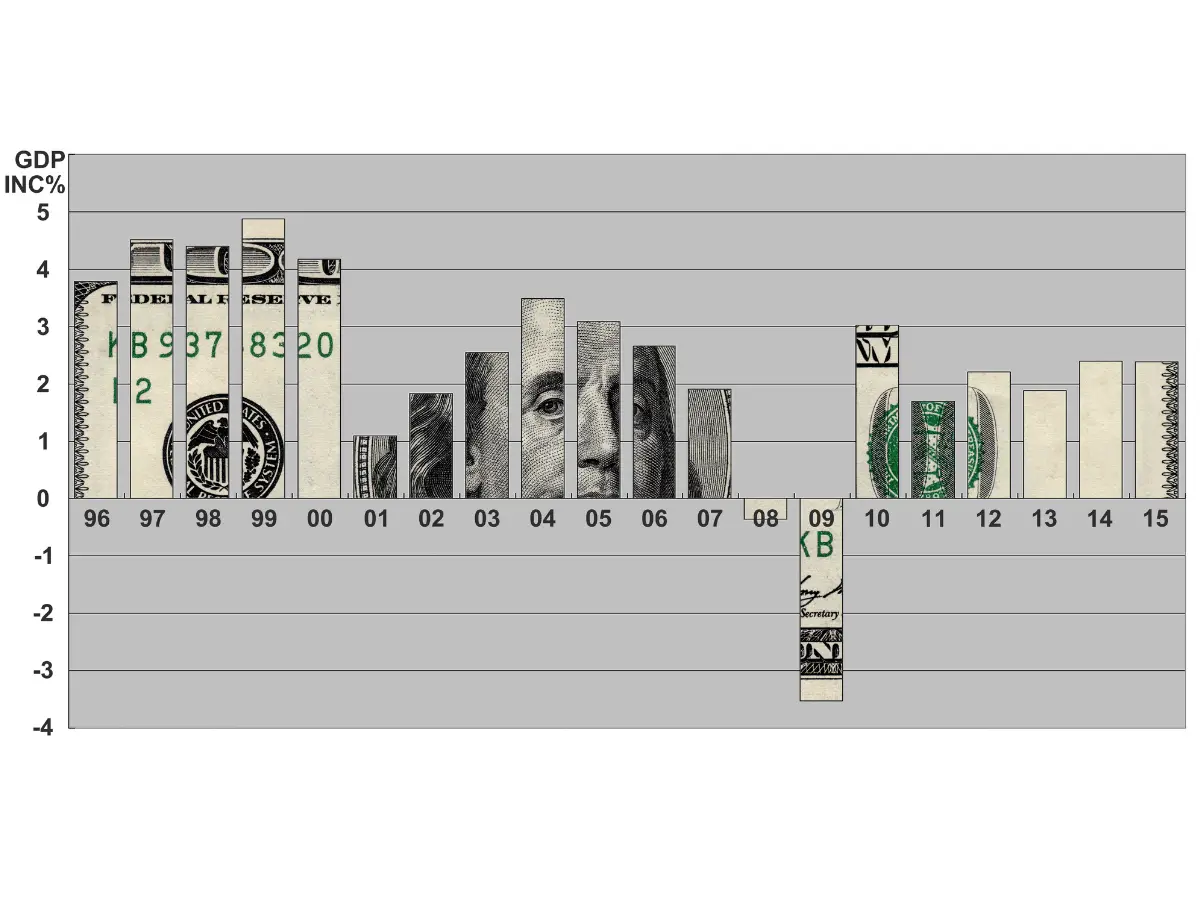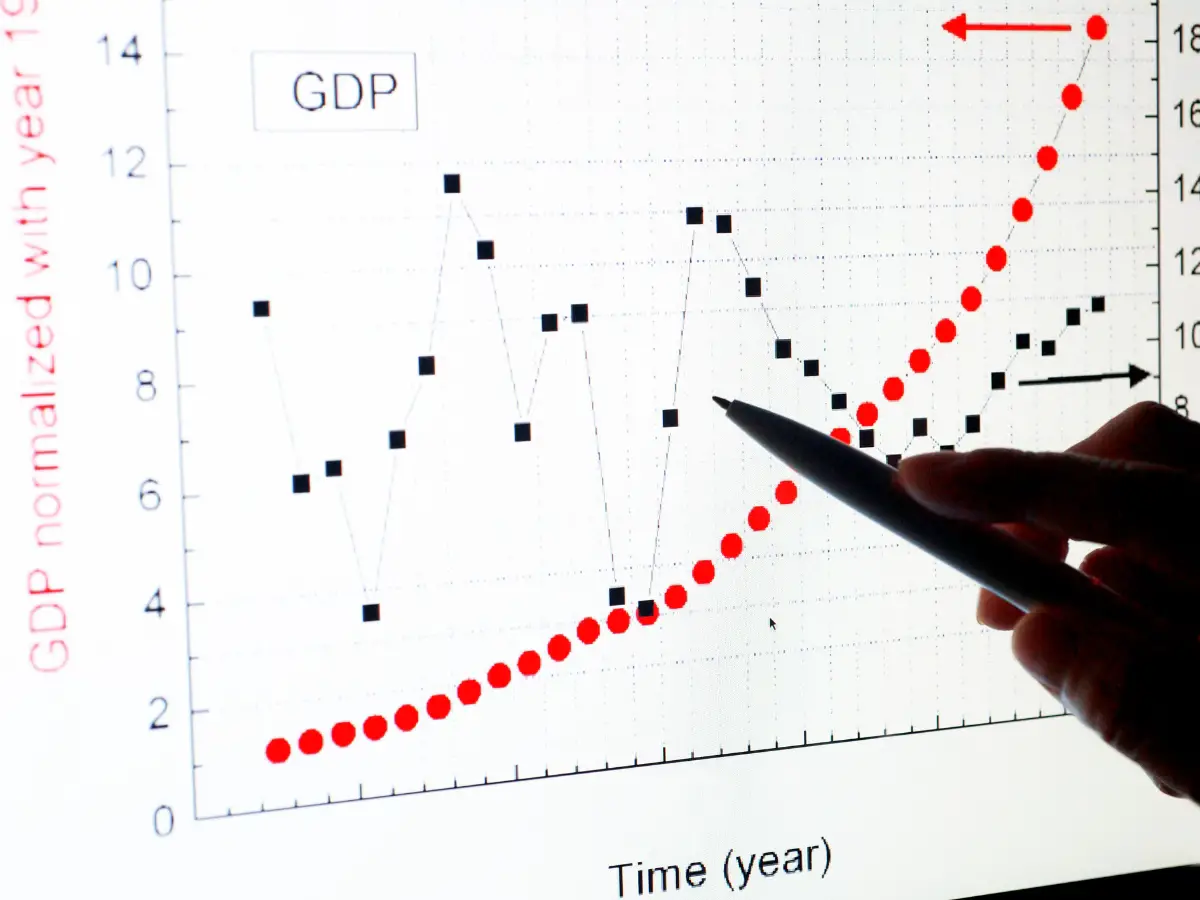California has one of the largest economies in the world, with a gross domestic product (GDP) of $2.89 trillion in 2022. This makes it the fifth-largest economy in the world, after the United States, China, Japan, and Germany. Despite being just one state in the US, California accounts for a significant portion of the country’s total GDP.
In 2021, California contributed 14.8% to the US GDP, despite only having 12% of the country’s population. This highlights the state’s economic importance to the rest of the country. California’s economy is diverse, with major industries including technology, entertainment, agriculture, and tourism.
The state is home to some of the world’s largest technology companies, including Apple, Google, and Facebook, which have helped to drive economic growth in recent years.

California’s Economy Overview
California has the largest economy among all the states in the United States. The state’s economy is so large that it is often compared to that of entire countries. In 2022, California’s Gross Domestic Product (GDP) was $2.89 trillion, more than many countries’ GDP. The state’s economy is driven by diverse industries such as technology, entertainment, agriculture, and tourism.
California’s population is also one of the largest in the United States, with over 39 million residents as of 2022. The state’s population has been growing steadily over the years, which has contributed to the growth of its economy. The state’s economy is responsible for generating a significant percentage of the nation’s total GDP.
California’s economy is considered to be a major contributor to the overall growth of the US economy. The state’s economic output accounts for approximately 14% of the US GDP. The state’s economy is also responsible for creating many jobs, with the unemployment rate in California being lower than the national average.
The state’s economy is divided into different regions, with each region having its own unique economic characteristics. The San Francisco Bay Area, for instance, is known for its thriving technology industry, while the Central Valley is known for its agriculture. The Southern California region is known for its entertainment industry and tourism.
In conclusion, California’s economy is a major contributor to the growth of the United States’ economy. The state’s diverse industries, large population, and unique economic regions all contribute to the state’s economic success.

GDP Analysis
Real vs Nominal GDP
Real GDP and nominal GDP are two different ways of measuring a country’s economic output. Nominal GDP is the total value of goods and services produced in a country, measured at current market prices. Real GDP, on the other hand, is the value of goods and services produced in a country, adjusted for inflation.
In California, the nominal GDP in 2022 was $3.2 trillion, while the real GDP was $2.89 trillion. This indicates that there was inflation in the state’s economy during the period. In comparison, the nominal GDP of the United States was $23.7 trillion in 2022, while the real GDP was $19.4 trillion.
GDP Growth Rate
The GDP growth rate is the percentage change in a country’s GDP from one year to the next. California’s overall real GDP growth rate was 109.36% over the period of 1997-2022, which outpaced the United States’ increase of 73.60%. In 2022, the real GDP growth rate of California was 4.5%, while that of the United States was 4.1%.
Per Capita GDP
Per capita GDP is the GDP per person in a country. In California, the per capita GDP in 2022 was $72,232, while that of the United States was $70,934. This indicates that the average Californian is more productive than the average American.
Overall, California’s GDP is a significant contributor to the United States’ economy. With a GDP of over $3 trillion, California’s economy is larger than the economies of many countries around the world. While the state’s economy has experienced some inflation, its growth rate has outpaced that of the United States as a whole. Additionally, the average Californian is more productive than the average American.
| Entity | California | United States |
|---|---|---|
| Nominal GDP (2022) | $3.2 trillion | $23.7 trillion |
| Real GDP (2022) | $2.89 trillion | $19.4 trillion |
| GDP Growth Rate (2022) | 4.5% | 4.1% |
| Per Capita GDP (2022) | $72,232 | $70,934 |

Industry Contribution to GDP
California is the largest state economy in the United States, and its gross domestic product (GDP) is comparable to that of many countries worldwide. The state’s economy is diverse and includes several industries that contribute significantly to its GDP. In this section, we will look at the major industries that contribute to California’s GDP.
Tech Industry
The tech industry is one of the fastest-growing industries in California and contributes significantly to the state’s GDP. The Silicon Valley region in the San Francisco Bay Area is home to some of the world’s largest tech companies, including Apple, Google, Facebook, and Intel. The industry’s contribution to the state’s GDP is expected to increase further in the coming years.
Agriculture and Trade
California is the largest agricultural producer in the United States, and its agricultural industry contributes significantly to the state’s GDP. The state’s top agricultural products include almonds, dairy products, grapes, and strawberries. California is also a major exporter of agricultural products, with its trade industry contributing significantly to the state’s GDP.
Retail and Finance
The retail and finance industries are also major contributors to California’s GDP. The state is home to several large retail chains, including Walmart, Target, and Costco. The finance industry is centered in San Francisco, with several large banks and financial institutions headquartered in the city.
Tourism
California is a popular tourist destination, with several attractions such as Disneyland, Hollywood, and the Golden Gate Bridge. The tourism industry is a significant contributor to the state’s GDP, with millions of visitors coming to the state each year.
In conclusion, California’s economy is diverse and includes several industries that contribute significantly to its GDP. The state’s tech industry, agriculture and trade, retail and finance, and tourism industries are major contributors to its GDP and are expected to continue growing in the coming years.

Major Companies Impact on GDP
Tech Giants
California is home to some of the largest tech companies in the world, including Apple, Google, Facebook, Cisco, and Oracle. These companies have a significant impact on the state’s GDP, with their combined revenue totaling over $1 trillion in 2022. In addition to generating revenue, these companies also provide high-paying jobs and attract talent from around the world.
Banking and Finance
Bank of America, Wells Fargo, and JPMorgan Chase are among the major banks headquartered in California. These banks provide financial services to individuals and businesses, and their operations contribute significantly to the state’s GDP. In addition to banks, credit card companies like Visa and Mastercard also have a significant presence in the state.
Retail and Entertainment
California is also home to major retail and entertainment companies, including Disney and McDonald’s. These companies generate revenue not only from their operations within the state but also from their global reach. The entertainment industry, in particular, is a significant contributor to the state’s economy, with Hollywood being the center of the film industry.
Overall, the major companies in California have a significant impact on the state’s GDP. These companies generate revenue, provide jobs, and attract talent from around the world. As such, they play a crucial role in California’s economy and will continue to do so in the future.
| Company | Revenue (2022) |
|---|---|
| Apple | $365.7 billion |
| $181.7 billion | |
| $86.9 billion | |
| Cisco | $49.3 billion |
| Oracle | $40.5 billion |
| Bank of America | $94.4 billion |
| Wells Fargo | $85.1 billion |
| JPMorgan Chase | $97.6 billion |
| Visa | $23.6 billion |
| Mastercard | $21.3 billion |
| Disney | $79.6 billion |
| McDonald’s | $21.1 billion |
Comparison with Other States
California has the largest economy of any state in the United States, with a gross domestic product (GDP) of over $3 trillion as of 2022. However, it is interesting to compare California’s GDP with other states to gain a better understanding of the economic landscape of the country.
Texas
Texas has the second-largest economy in the United States, with a GDP of $2.1 trillion as of 2022. While California’s economy is larger than Texas, the Lone Star State has been experiencing strong economic growth in recent years. In the fourth quarter of 2022, Texas had the highest percentage increase in real GDP of any state, at 7.0 percent.
New York
New York is the third-largest economy in the United States, with a GDP of $1.7 trillion as of 2022. The state is home to many major financial institutions and is a hub for international trade. However, New York’s economy has not been growing as quickly as some other states in recent years. In the fourth quarter of 2022, New York’s real GDP increased by 1.8 percent.
North Dakota
North Dakota has a much smaller economy than California, with a GDP of $61.6 billion as of 2022. However, the state’s economy has been growing rapidly in recent years due to an oil boom. In the fourth quarter of 2022, North Dakota’s real GDP increased by 5.2 percent, making it one of the fastest-growing states in the country.
Alabama
Alabama has a GDP of $211.6 billion as of 2022, making it one of the smaller economies in the country. However, the state has been experiencing steady economic growth in recent years, with a real GDP increase of 2.7 percent in the fourth quarter of 2022.
Maine
Maine has a relatively small economy, with a GDP of $69.7 billion as of 2022. The state’s economy is largely based on industries such as fishing, forestry, and tourism. In the fourth quarter of 2022, Maine’s real GDP increased by 2.3 percent.
Puerto Rico
Puerto Rico is a territory of the United States and has a GDP of $103.5 billion as of 2022. The territory has been experiencing economic struggles in recent years, with a real GDP decrease of 1.9 percent in the fourth quarter of 2022.
Wyoming
Wyoming has a small economy, with a GDP of $39.9 billion as of 2022. The state’s economy is largely based on the energy sector, with coal, oil, and natural gas being major industries. In the fourth quarter of 2022, Wyoming’s real GDP increased by 3.0 percent.
Mississippi
Mississippi has a GDP of $104.6 billion as of 2022, making it one of the smaller economies in the country. However, the state has been experiencing steady economic growth in recent years, with a real GDP increase of 2.5 percent in the fourth quarter of 2022.
District of Columbia
The District of Columbia is not a state but is a federal district that serves as the capital of the United States. The district has a small economy, with a GDP of $151.8 billion as of 2022. The district’s economy is largely based on the federal government, with many government agencies and contractors located in the area. In the fourth quarter of 2022, the district’s real GDP increased by 1.9 percent.
Socio-Economic Factors
Unemployment Rate
California has historically had a higher unemployment rate than the rest of the United States. In 2022, the unemployment rate in California was 6.3%, while the national unemployment rate was 4.2%. However, the state has made significant progress in reducing unemployment in recent years. From 2010 to 2022, California’s unemployment rate fell from 12.4% to 6.3%.
Poverty Rate
California has one of the highest poverty rates in the United States. In 2020, the poverty rate in California was 10.8%, compared to the national poverty rate of 9.2%. Poverty rates vary widely across the state, with some counties experiencing poverty rates as high as 25%. The high cost of living in California is a major contributing factor to the state’s high poverty rate.
Per Capita Personal Income
Despite its high poverty rate, California has a relatively high per capita personal income. In 2020, the per capita personal income in California was $76,687, compared to the national per capita personal income of $57,618. However, there is significant income inequality within the state, with some areas experiencing much higher incomes than others.
Overall, California’s socio-economic factors are complex and multifaceted. While the state has made progress in reducing unemployment and increasing per capita personal income, it continues to struggle with high poverty rates and income inequality.
Influential Factors on California’s GDP
Droughts
California is a state that is prone to droughts, which can have a significant impact on the state’s economy. Droughts can lead to reduced agricultural production, which can in turn affect the state’s food supply and export capabilities. In recent years, California has experienced several severe droughts, which have had a negative impact on the state’s economy. However, the state has implemented measures to mitigate the impact of droughts, such as water conservation programs and investments in water infrastructure.
Education
Education is an important factor in California’s economy. The state has a large and diverse population, and a well-educated workforce is essential for the state’s economic growth. California has a strong public education system, including top-ranked universities such as the University of California and the California State University system. In addition, the state has a thriving private education sector, with many prestigious private schools and universities.
Politics
The political climate in California can also have an impact on the state’s economy. California is known for its progressive politics, and the state has implemented many policies aimed at promoting economic growth and social welfare. However, some critics argue that these policies, such as high taxes and strict regulations, can hinder economic growth and discourage businesses from investing in the state.
Health
The health of California’s population is also an important factor in the state’s economy. California has a large and diverse population, and health disparities can have a significant impact on the state’s economy. In recent years, the state has implemented policies aimed at improving access to healthcare, such as the expansion of Medicaid and the implementation of the Affordable Care Act.
Overall, California’s GDP is influenced by a variety of factors, including droughts, education, politics, and health. While some of these factors can have a negative impact on the state’s economy, others can contribute to its growth and prosperity. By implementing policies aimed at mitigating the negative effects of these factors and promoting economic growth, California can continue to be one of the largest and most influential economies in the world.
Frequently Asked Questions
What is the current ranking of California’s GDP among U.S. states?
California has the largest economy of all the U.S. states. In 2021, California’s GDP was approximately $3.2 trillion, which is higher than the GDP of any other state.
What is the GDP per capita of California compared to other U.S. states?
California’s GDP per capita was approximately $80,000 in 2021, which is higher than the national average. However, other states such as New York, Massachusetts, and Connecticut have higher GDP per capita than California.
How does California’s GDP compare to the rest of the world?
California’s economy is the fifth largest in the world, behind the United States, China, Japan, and Germany. In 2021, California’s GDP was larger than the GDP of countries such as the United Kingdom, France, and India.
What percentage of the U.S. GDP does California contribute?
California contributes approximately 14% of the total U.S. GDP. This is a significant contribution, considering that California is only one of the 50 states in the U.S.
Which U.S. states contribute the most to the country’s GDP?
California, Texas, and New York are the top three states that contribute the most to the U.S. GDP. In 2021, these three states accounted for approximately 30% of the total U.S. GDP.
Is California’s GDP higher than the national average?
Yes, California’s GDP is higher than the national average. In 2021, the U.S. GDP was approximately $22 trillion, while California’s GDP was approximately $3.2 trillion. This means that California’s GDP accounts for approximately 15% of the total U.S. GDP.





